A review of Devin Fore, Realism After Modernism, MIT Press, Cambridge MA, 2012
hb and 2015 pb. 416 pp., £26.95 hb., £17.95 pb., 978 0 262 01771 8 hb., 978 0 262 52762 0 pb. Another version of this review was published in Radical Philosophy, No.195, January 2016. This version contains additional passages on Lukács and Buchloh not included in the published version.
According to Roman Jakobson, writing in 1922, realism ‘is an artistic trend which aims at conveying reality as closely as possible and strives for maximum verisimilitude. We call realistic those works which we feel accurately depict life by displaying verisimili-
tude.’ Acknowledging the diversity of artistic movements which have made claim to exactly this sense of realism in their works – futurism, expressionism, various modernisms, as well as the nineteenth-century movement known as ‘realism’ – Jakobson notes the ‘extreme relativity of the concept of “realism”’. Hereafter, further ambiguities unfold. The most poised is perhaps that summarized by Jakobson under the heading B (as if issued from the position of an author’s intention to be realistic):
B1. I rebel against a given artistic code and view its
deformation as a more accurate rendition of reality.
B2. I remain within the existing limits of art expression as that is realistic.
If Jakobson’s framework establishes a polarity between the conservation of stable codes of art and the necessity to break down and renew them, over which realism mediates, Devin Fore’s ambitious book presents an argument about realism which synthesizes and complicates these two positions. Fore’s argument develops from the view that, during the interwar period, movements of international modernism exhausted themselves and effected a ‘withdrawal’. In modernism’s wake there was a return not exactly to ‘realism’, but to a transformative revival of tropes, devices, representational modes, genres and
subject matter drawn from earlier artistic periods and movements before modernism. Fore claims that what united these apparent archaisms was the return to the human figure. Yet his contention is that, although these forms may appear archaic, their use in the period immediately after modernism is characterized by fragmentation and rearrangement of the
coordinates of their signifying power, constituting an unprecedented transformation.
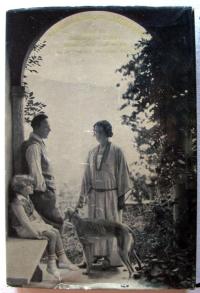
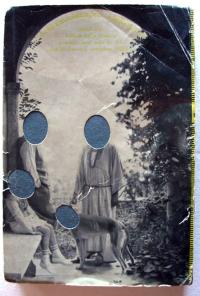
John Heartfield, back cover illustration for Upton Sinclair, Das Geld Schreibt (before and after censorship), 1930
Invoking Walter Benjamin’s ‘negative mimesis’, Fore intends to define the sensitivity to man’s eclipse, which had faded from the anger and anti-rational revolt expressed in Dada, into something more immanent, perverse and alienated, smuggled under realist dress – not seeking freedom from modern alienation and ‘mute reality’, but an immanence akin to Adorno’s ‘mimesis of the hardened and alienated’. Through examples crossing a series of representational renewals – of figuration in painting and photography; perspective
in photography; gesture and filmic documentation in theatre; representation, myth and autobiography in fiction – Fore presents a case for the deepening of both ‘realism’ and ‘modernism’ as innovative forms of epistemic enquiry. This, he argues, is especially the case for figuration, since the return to representation of the human form depended upon an object/subject that had entirely changed: a new kind of human being. In sum, realism was not the same after modernism. As Fore puts it: ‘Realism after Modernism argues that the manifest resemblance between interwar art and the art of the previous century confirms nothing so much as the ineluctable fact of their historical non-equivalence.’
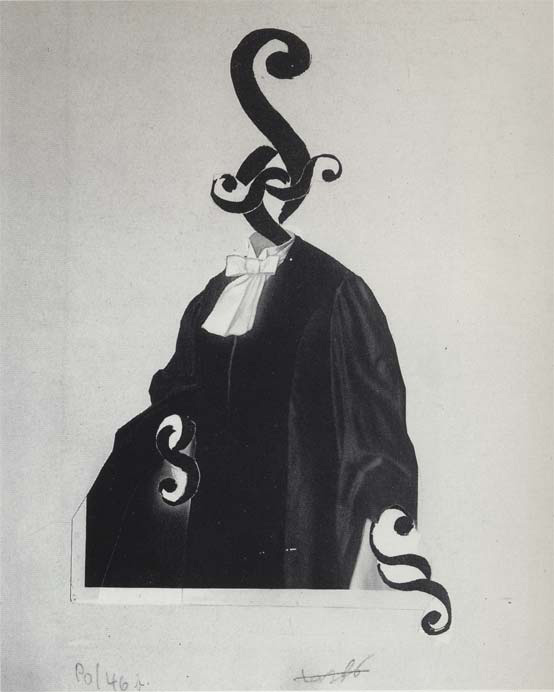
John Heartfield, I Only Know Legal Paragraphs, (montage for Kurt Tucholsky, Deutschland, Deutschland über alles, 1929
As such, Fore’s book revisits, without precisely acknowledging, Benjamin Buchloh’s controversial thesis in his 1981 essay ‘Figures of Authority, Ciphers of Regression’, in which, surveying European modernist painting in the 1910s, 1920s and 1930s, Buchloh
established a schema with which to connect the rise of fascism and state-political orientations towards authoritarianism in the 1920s and 1930s, with the abandonment of abstraction and the return to figuration across the European avant-garde. This reductive account ironically provides the ground upon which Fore develops a far richer and more circuitous route through the aesthetics and politics of the interwar years. Against Buchloh’s characterization of the ‘bleak anonymity and passivity of compulsively mimetic modes’, Fore’s approach is analytically nuanced and conceptually rewarding. Rather than making mimicry a derogatory accusation, Fore opens mimesis itself to historical thought, tracking its aesthetic modalities through artistic techniques as they grapple with representing the human figure: ‘Even where it was not evident in the content of the artwork or text, the human figure organized the very codes and conventions of realist representation.’ Instead of making artistic technique a matter of mere volition or commitment, Fore’s conceptual framework, partially derived from Russian Formalism, allows for the interaction of volition and chance, involuntary forms of expression and voluntarism, truth to materials, complex technological articulation and mediation, and the inscription of the subjective in objective form. This peripatetic materialism, detour- ing through the internal motivations of artworks to explore their encoding of the world, in a way which is part of the world rather than merely mirroring it, presents a formalism misunderstood by many of its ‘Marxist’ adversaries. Fore’s approach hereby presents a serious challenge to attempts to periodize modernism and realism from a Marxian perspective, but it does not amount to, in itself, a periodization.
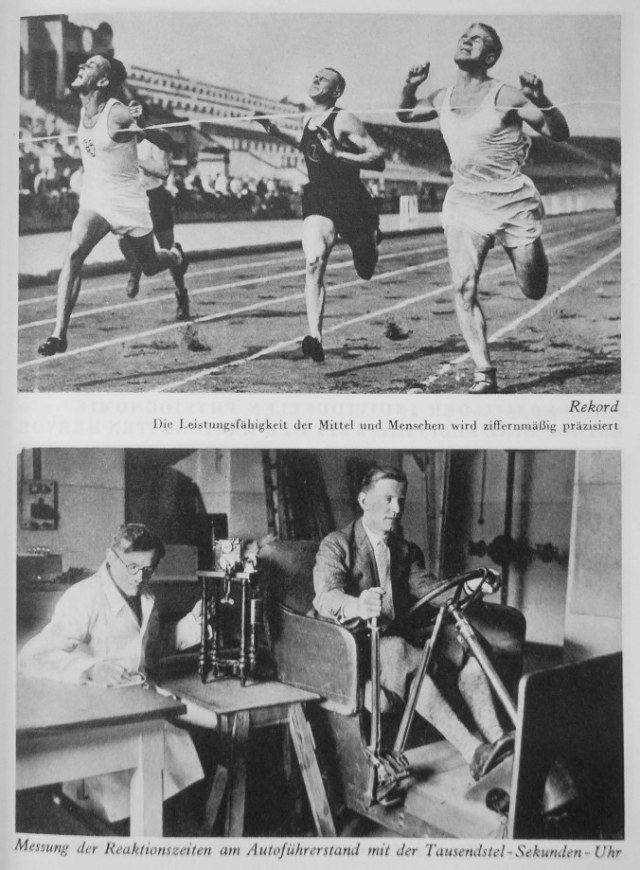
Ernst Junger, The Performance of the Means and the People Will be Numerically Refined, montage, c.1930
Despite, or perhaps exactly because of, Lukács heavyweight status in this field, his enduring jurisdiction upon debates over the politics of modernism and realism in the 19th and 20th century, especially during the 1920s and 30s, his few substantial appearances in this book are largely limited to establishing that Lukács’s realism is precisely not the kind of realism we are discussing here. This point is hammered home specifically regarding Brecht’s strong rejection of Lukács’s embrace of his play, The Informer, (134-135). For Brecht, Lukács had misinterpreted his work as a capitulation to humanist naturalism, and could do so only by wilfully ignoring the integration of 27 montage scenes in a work that was both ‘epic and naturalistic’ (135). It is Fore’s strong conviction that Lukács’s opposition of realism to avant-gardism was ‘already analytically insufficient at the very moment of its emergence.’ (135) Yet, if Buchloh himself may be to blame for the reductive Lukács that has circulated among the readers of October, it is an a bold move to dismiss such a significant contributor to the debate one positions oneself at the centre of in the space of only two pages. If this irreverent radicality makes sense in the context of Fore’s emphatic pursuit of the formal analysis of singular artworks in themselves, it bodes somewhat badly for the robustness of his own framework.

Lazlo Moholy-Nagy, Human Mechanics, c.1925
The Introduction to Realism after Modernism establishes a framework for thinking the achievements of the early-twentieth-century avant-garde in broadly anti-humanist cultural terms: ‘the shared modernist aspiration to achieve conditions of perception and
consciousness outside of what is customarily arrogated to the human’. Allied within this constellation are: the formalist, Dadaist and futurist detonations of human-centred language; Erwin Panofsky’s theorization of the artificiality and historicity of multiple
forms of perspective; Dziga Vertov’s non-human camera eye; Cézanne and cubism’s phenomenological approaches to vision. The broad movement José Ortega y Gasset characterized as a ‘dehumanization of art’ triggered, in Fore’s words, a ‘countermovement’
of ‘rehumanization’, established on the ‘paradoxical’ and ‘conflicted’ ground of the human figure. The fragmentation of human language and the human body, both outcomes of the ‘destruction of experience’ in the maelstrom of World War I noted by Benjamin in his 1933 text ‘Poverty and Experience’, was followed in Germany, France, Britain and the USA by a period of extended economic crisis as mechanization, inflation, rationalization (Taylorism), unemployment and international debt repayments eviscerated social roles, bonds and communities – described brilliantly, in the context of late-Weimar society, by The Salaried Masses, Siegfried Kracauer’s study of the rise of a white-collared and service class. Fore glosses lightly over these wider political economic conflagrations in order to emphasize the physiological implications: ‘the individual becomes indistinguishable from the technical objects around him’; the ‘crisis of culture’, as the front page of Die Literarische Welt put it in 1931, ‘is but the symptom of … the crisis of man himself’. Fore’s primary resources for thinking this ‘crisis of man’ are situated within a tradition of philosophical anthropology heavily indebted to two figures he claims as ‘leading voices of German critical theory today’, Oskar Negt and Alexander Kluge. Their concept of man as a ‘deficient mutant’ – a ‘life form which, according to its metabolism, is not autonomous, but enters into concrete associations with others’ – is derived from Arnold Gehlen’s definition of man as a ‘deficient being’. This grounds not only Fore’s understanding of the human as social and co-dependent on forms of technology, but also his understanding of artworks as technical objects among others, facilitating new and self-reflexive forms of vision. But Fore’s somewhat optimistic appeal to man’s ‘deficiency’ is haunted by the political defeats surrounding every artistic practice engaged with by his study. The apparition of what, in Aesthetic Theory, Theodor W. Adorno termed ‘the subject as congealed technology’ is notable by its absence. (Indeed, a darker reading of Negt and Kluge is possible. See, for instance, Stewart Martin, ‘Political Economy of Life: Negt and Kluge’s History and Obstinacy’, RP 190.)

Lazlo Moholy-Nagy, Leda and the Swan, 1926
Fore brings us incredibly close to a recognition of the embedding of the subject in productive forces, only to steer clear of such difficult mediations in order to grant wholesale autonomy from them. This is reflected in Fore’s relation to Marx. Inspired by Negt and Kluge’s ‘pre-historical’ conception of labour (or perhaps a misunderstanding of it), Fore explicitly endorses the search for answers in the ‘remote past’, pitting Braudel against Marx. Capital’s ‘anti-natural temporality’ is opposed to the ‘natural’ temporality of human reproduction, for example women’s labour. Yet, this would appear to ignore the fundamental binding and integration of capital and labour in their mutual reproduction – something Marx named the Zwickmühle or double moulinet. If the capital–labour
relation is not understood historically, then one can barely conceive of an ending to it. Moreover, we then find difficulties specifying man as a historical animal in anything other than the most general sense.
Fore foregrounds singular works or series, often a counter-movement within the artist’s oeuvre, which present a critical perspective on the general move- ments of the work of their contemporaries, standing out of and against their time. Fore’s chapters focus on seven bodies of lesser known and sometimes minor works by interwar Weimar artists. In chapter 1, it is Lázló Moholy-Nagy’s contrarian photographic re-engagement with perspective after modernism. Chapter 2 is possibly the most rewarding, presenting three ‘industrial novels’ under the sign of capital’s anti-natural temporality: Franz Jung’s The Conquest of Machines (1923), Erik Reger’s The Union of the Strong Hand (1931) and Bertolt Brecht’s Threepenny Novel (1934). Chapter 3, ‘Gestus Facit Saltus: Bertolt Brecht’s Fear and Misery of the Third Reich’, attempts to rescue Brecht’s transition to hybrid theatre forms and his efforts to make legible the gestures (Gestus/ Gesten) of a collective agent from the clutching impositions of Lukács’s humanistic advocacy of social realism and the Popular Front. Chapter 4 attempts to present cubist critic Carl Einstein’s unfinished rewriting of his expressionist novel Bebuquin in terms which undermine established polarities between autobiography and modernist literature, and bring them into alignment with the countermovement towards figuration and allegory in the visual arts. Chapter 5, ‘The Secret Always on Display’, explores the status of caricature and the commodification of the human figure through the enigmatic collages of John Heartfield. Finally, in place of a conclusion, the final chapter forms a ‘coda’ on Ernst Jünger’s post-World War II science-fiction novel The Glass Bees.

Otto Dix, The Matchseller, 1920 on the cover of Bertolt Brecht, Threepenny Novel, 1934
Only at the end of Realism after Modernism do more grating contradictions reveal themselves. The promise of the Introduction is simply left suspended as we come to realize the book is not an unfolding argument but a series of excellent and well-researched essays. There is a theory of modernism and realism here, but it tends to fall to pieces or disappear from view in the treatment of the artwork. That there is no general theory or system might be excused or even embraced, but this could have been stated clearly at some point. Early on in the book Fore rails against a ‘conspicuously anti-collectivist’ statement by El Lissitzky, suggesting that singling out individual artists is problematic, but, by the end, this objection has turned on Fore himself. Fore is clear that all his studies concern exceptions to disprove the rule of a return to figuration in the 1920s and 1930s. But these exceptions cannot disprove the rule. Fore’s initial premiss and Introduction demand a more encom-
passing study than the rest of the book delivers. We are bound to disappointment from the start.
The historical specificity of Fore’s readings is admirable compensation, but not without its limits. He often isolates his protagonists from the immediate political and artistic milieux of which they were a part without historical justification. For instance, Carl Einstein’s involvement in the ‘collective syntax’ of the Durruti Column is leant on by Fore to moderate his more reactionary-sounding aesthetic positions, such as his advocacy of a return to myth. Yet, Einstein’s political writings from the years 1936–40, contemporary with Bebuquin II, are only sampled lightly. Did Einstein really understand this as an extension of his artistic-critical work, as Fore implies? Or did he simply shelve it? Fore’s analysis is inconclusive. Fore establishes regular dialogue between Soviet and Weimar artists, appropriately in the case of Tretyakov and Brecht, but almost never between German figures themselves, or with other European counterparts. The debate on Proletkult raging on the German Left throughout the 1920s is neglected by Fore, but should have been of some significance for his studies of Brecht, as well as of Reger and Jung. Fore’s study of Heartfield would have benefited from considering the composition of the KPD, whom Heartfield made election posters for in 1930. By this date, the KPD was entirely Stalinized and hell-bent on confrontation with the rest of the workers’ movement, whether it be the then-ruling SPD, or the groupuscules and associations to their left. The KPD gained 23 seats in the 1930 elections, but the Nazis (NSDAP) gained 95 to become the second party. If the judgement of Heartfield’s posters weighs upon how well it communicated with the masses, how much it represented and fulfilled the promise of communism, then either they didn’t want communism, or not in its Stalinist form, or Heartfield wasn’t doing a very good job.
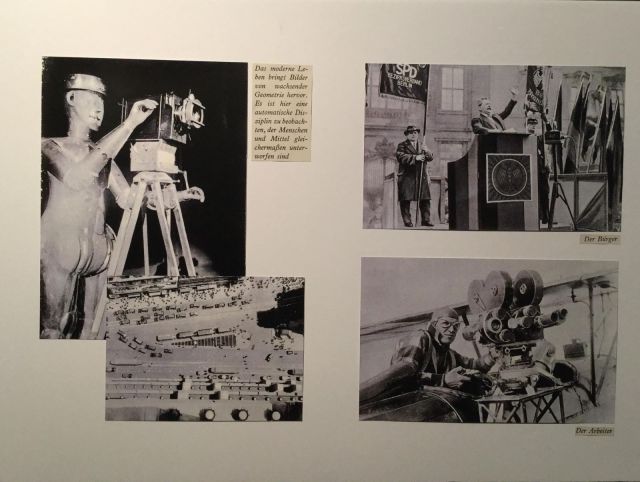
Panels from Ernst Junger’s photo-books c.1930
Finally, for me, the biggest elision: the question of representation was a central debate in communist and anarchist scenes on the German and European Left, yet this basic conflict between communism and representative democracy never sees the light of day in Realism after Modernism. There is no ‘realism’ in communist circles in Europe in 1920 and 1930
without the question of political representation being at the fore. Brecht, Jung, Eger, Einstein and Heartfield were each close enough to the political Left to have been conscious, if not wholly involved, in these debates. As a conservative revolutionary, Jünger was
anathema to these scenes, but even he was touched by these discussions. Singling out Jünger’s The Glass Bees, first published in 1957, as the only post-World War II book under discussion, suggests two things. The first is that Jünger’s science fiction provides a
bridge between interwar ‘re-humanization’, postwar conservative humanism, and our own period of nanotechnological disorientation. The second, less explicit, is that Jünger’s philosophical-political orientation should now be found sympathetic. Fore’s analysis yields to Jünger’s vision of a postwar and technocratic society, which retains strong pre-modern and hierarchical elements. ‘Has there ever been at any period in the history of the world so many dismembered bodies, so many detached limbs, as in ours?’ That man is in pieces, Jünger understood, from his experience of World War I. He thought it then a necessary state from which to develop a new mankind in step with ‘de-anthropomorphizing’ technology. Captain Richard, hero of The Glass Bees, partisan of this ‘armoured vision’, and veteran of the massacre of a whole generation of working-class bodies, appears to connect the investment in growing fixed capital with the piles of dead people, but the novel ends happily, perhaps ironically. In the final scene, Richard, ill-suited for the management of new technology, returns to civil human life and traditional gender relations, taking on a more ‘human’ role working as an arbitrator of disputes between employees. He buys his wife a dress; ‘It fit her like a glove; I knew her measure precisely.’ It is, as Fore notes, a bathetic note on which to end. Yet, if this is true for The Glass Bees, sadly it is also true for Realism after Modernism. Richard’s arbitration is merely at the management end of the process that will continue to churn out mutilated human parts and synthetic worker bees. Despite taking a more even view of the negative effects of high-tech development, The Glass Bees remains consistent with Jünger’s brand of reactionary elitism, extending his vision of the worker as the civilian-engineer corollary of the warrior-soldier striving for the reproduction of a community of the elect. If more ‘human’ is here only an index of calculative domination, it remains unclear if Jünger would agree. By emphasizing those elements that are most objective in works of art, Realism after Modernism exposes that what is bracketed off as subjective also bears the deforming trace of social relations of
production.
Anthony Iles
* The title for this text is derived from an Armenian riddle glossed by Roman Jakobson here: https://saladofpearls.wordpress.com/2015/10/26/armenian-riddle/